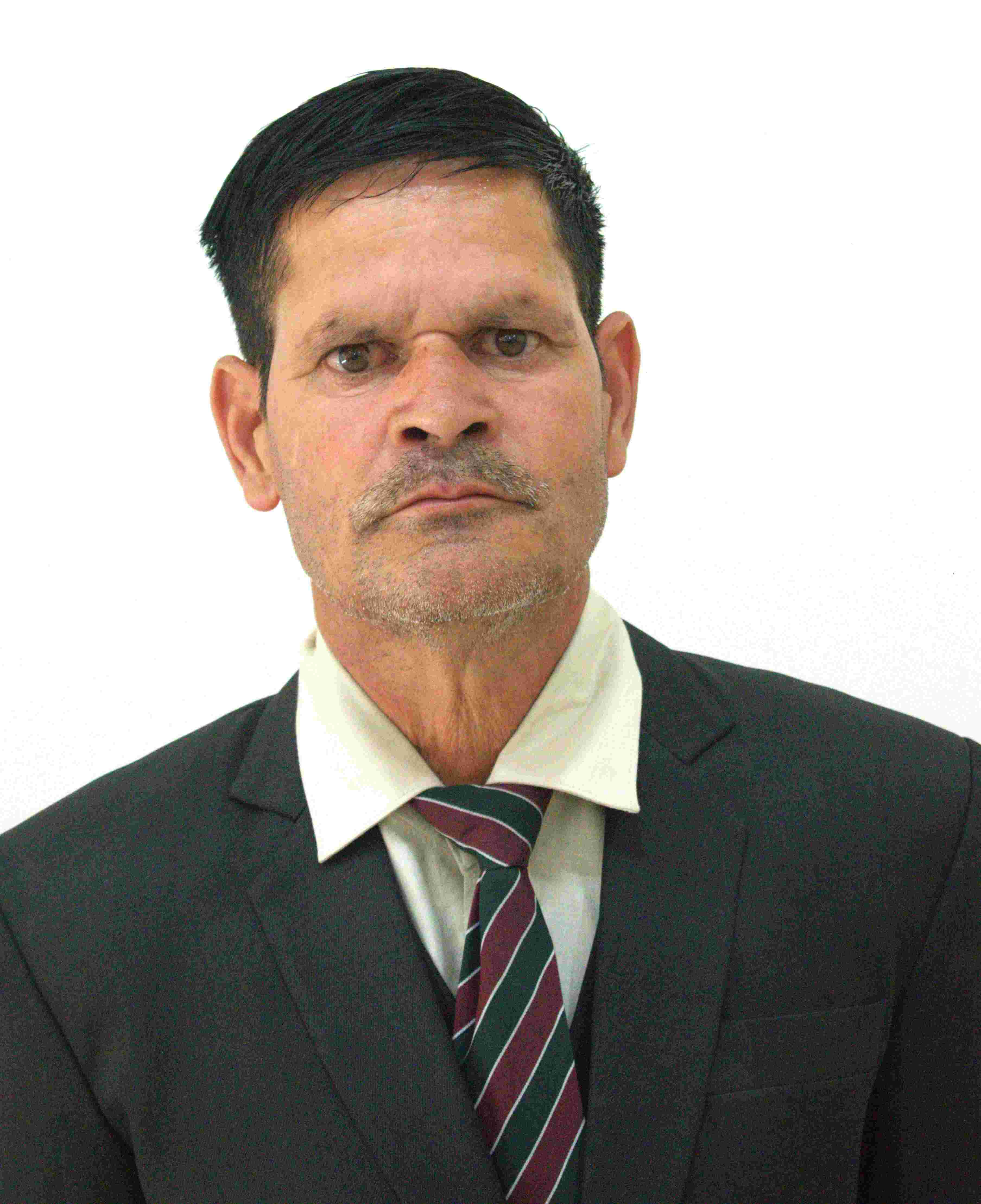ICAR-NBPGR Regional Station, Bhowali

Station Coordinator: Dr. Krishna Madhav Rai
Contact Numbers: 05942-297714, 05942-220027
Address: ICAR-NBPGR Regional Station Bhowali, Niglat, District: Nainital – 263132, Uttarakhand, INDIA
E-mail: Krishna.Rai(AT)icar.org.in
Google Map
Mandate
The Station was established in 1943, as an Imperial Potato Research Station and known as “Hot Spot” for the development of plant diseases. It was meant for potato seed multiplication and for brown rot disease (Pseudomonas solanaeaum) testing. In 1956, with the commencement of Wheat Improvement Scheme under PL-480, it was transferred to Indian Agricultural Research Institute (ICAR) and its name was changed as “Wheat Research Station”. In 1984 it was transferred to Vivekanand Parvatiya Krishi Anusandhan Sansthan (VPKAS), Almora and remained under the control of VPKAS, Almora for a period of two years. In April 1986, again it was retransferred to National Bureau of Plant Genetic Resources (NBPGR), New Delhi. Since then, it is with NBPGR as one of its Regional Stations. Regional Station, Bhowali is situated at 290 20’ N latitudes 790 30’ E longitudes at an altitude of 1600 msl in cold humid, sub-temperate climate with an average annual rainfall of 1200-1600 mm and temperature ranges from -0.080 to 330 C (mercury drops even upto – 70 C during December to February). The station is located 15 km away from the district Headquarters, Nainital and has following mandate:
- Planning/ Coordination of Explorations in Central Himalayan Region (CHR) for trait specific/ desired germplasm (Identification/Collection of New/Lesser Known/Life Support plant Species).
- Characterization/Identification of Promising/Elite Germplasm of mandated crops (Wheat , Barley & its Wild Relatives (Aegilops spp. & Triticum spp.), Paddy, Minor millets, French bean, Horse gram, Soybean & Lentil, Chilli, Citrus spp., M & AP).
- Maintenance/Safe Conservation for Utilization.
- Documentation
- Public Awareness/ Campaign and Training of Manpower for Sustainable Management of Plant Biodiversity
Salient Achievements
A total of 17277 germplasm accessions were collected through 176 explorations. Some of the remarkable, areas, far distant places, remote and inaccessible areas and tribal dominated areas i.e., Niti and urgam valleys, Roopkund (5000 m), Valley of Flowers (3000-4500 m), Tharus and Buxas tribal dominated villages (100-300 m), Har-Ki-Doon, Chansil Dhar (4000 m), Garbyang, Om Parvat, Parvati Sarovar (4500 m), Sunder Dhunga, Kafni and Pindari glaciers (3000-4500 m) were surveyed and explored.
Characterization and Conservation:- A total 17116 accessions were characterized and evaluated viz. field crops (15522), horticultural crops (1143) and M & AP (451).
- 1017 accessions of different crops comprising Horticultural crops (536), WEUP (227), wild Allium (174) and MAP (80) were maintained in the FGB.
- In Medium Term Storage (MTS), 11,786 accessions including cereals (3509), pseudo-cereals (582), millets (592), pulses and legumes (3820) oilseeds (543), vegetables (1599), spices and condiments (695), medicinal and aromatic plants (179), ornamentals (23) and WEUP (284) have been maintained.
- During last one decade RET species viz., Allium stracheyi, Allium negianum, Citrus medica, Prunus cornuta, Prunus jacquemontii, Prunus mira, Ribes alpastre, Ribes himalense, Thymes lineris were collected and maintained in the field gene bank for future research purposes.
- Total 15 accessions of Olive and Avocado have been enriched in the field gene bank for evaluation and further popularized suitable accessions.
- First time Allium przewaliskianum was collected from Trans-Himalayan region of Niti valley, Chamoli, Uttarakhand, which is domesticated by the local community as seasoning spice and maintained in field gene bank.
- A new taxon of genus Allium was collected and conserved (Allium negianum) from sandy soils along the rivers of Alpine meadow (Altitude 3000-4800 m asl.) of Malari region of Niti valley, Chamoli, Uttarakhand.
- A total of 174 accessions of wild Alliums were maintained in field gene banks and characterized for morphological characters such as vegetative growth, flowering character and seed morphology.
- A total of 61 accessions of different Rubus species (25) were collected from Indian Himalaya including Western Himalaya and North Eastern Himalaya and established in filed gene bank for morphological characterization, bio systematic studies and domestication.
- A total of 20,873 germplasm accessions of various crops have been supplied to different indentors under MTA.
- A total of 4,17,830 quality planting material including rooted live plant propagules/ grafted fruit plants were supplied to different progressive farmers / indenters as per their request.
- 1963: NP846 (Rio Nego x NP 760) – (Tall variety suited for rainfed areas of Northern hills).
- 1978-79: HB 208 (EC4714 x HB (M) 65-50 or Kiran) – Double dwarf could be grown under rainfed as well as under irrigated condition).
- 1980: HB 501 (C no’s x Son 64 x Kl. Rend.) x S. ceros) – Hill bunt resistant.
- 1980: HB 102-101 (Kal’s x NP 846) – (Daruranan 1) in Afghanistan.
- 2003: BRS-01 Green mottled grain colour – Identified and notified (for hills) for grain yield and early maturity during Varietal Identification Committee meeting at GAU, SK Nagar, Gujarat w.e.f. April 04 – 05, 2003.
Elite germplasm popularisation: Kiwi, Actinidia chinensis (EC64093, EC24672, EC64094, EC64090, EC137263, EC64092), Kagazi nimbu, Citrus aurantifolia (IC319045), Uttaranchali Chow-Chow, Sechium edule (IC319045), Kaku, Diospyros kaki-Japanese persimmon, Allium sp (IC219062), Hisalu – Rubus sp. (IC219063), Perennial Phlox (IC319010, IC319011, IC319012), Rosmary, Rosmarinus officinalis (IC449513, IC334572 & NIC 23416), Lavender, Lavendula angustifolia (IC212822 & IC273870), Rose geranium, Pelargonium graveolens (IC296494, NIC 23413), Marjoram, Origanum vulgare (NIC 23428), Aloe, Aloe barbadensis (IC-353504), Sweet Basil, O. basilicum (EC333788, EC383447, EC387835), Camphor Basil, Ocimum kilimanscharicum (IC449493), French lavender, Lavendula stoechus (IC449512), Lemon Basil, O. citriodorum (EC338785), Holy Basil, O. sanctum (IC212802), Oregano, Origanum vulgare (IC589087, IC589079), Spiked ginger Lily, Hedychium spicatum (IC573208), Indian Valerian, Valeriana jatamansi (IC573206), French bean (BBS-11, BBS-13 & BBS-24), Stevia, Stevia rebaudiana (IC449511), Wheat (HB-208, 101 and 102), Hordeum bulbosum (EC328175), Pea (Harbhajan and Selection 18), Bold seeded Soybean (IC296814) and Black seeded soybean (IC548683), Rice bean (Naini, Mansa, Chaukhamba, BRS-01) for distribution among the local farmers.
Popularization of landraces for on-farm conservation through participatory approach: Total 734 accessions of various Kharif and Rabi crops were tested at farmer’s field towards their mainstreaming and on-farm conservation out of which about 45 varieties/accessions have been brought into the cultivation.
Genetic Stock identified:Kharif Crops:
Paddy: (i) Leaf blast resistant: IC322424, IC322414, (ii) Helminthosporium and leaf spot: IC548675, IC548685, IC556520, IC548372, IC548375 and IC548391, (iii) high protein: Lambgudi, (iv) High potassium and phosphorus content: Bamkua
Chilli: IC537595 against powdery mildew, leaf spot, mosaic virus and fruit rot.
Soybean: IC567944 against leaf spot, mosaic virus; IC 262059 for high protein and iron content; IC 393217 for high flavonoids content; IC 574366) for high total anti-oxidant and phenols.
Ricebean: RBL-160, IC563980, RBL-6 and PRR-1, LRB-320, PRR-1, LRB-425 and LRB-443 against leaf spot, mosaic virus and powdery mildew.
French bean: IC566782 and IC280837 against leaf spot, mosaic virus, yellow mosaic virus and powdery mildew (vegetable type climber).
Rabi Crops:
Wheat: (i) Powdery mildew resistant: EC609399, EC609401 & EC609436 (ii) Yellow rust resistant: EC609431, IC564096, IC544162 (iii) Yellow rust and powdery mildew: IC564103 and EC609402.
Barley: (i) Yellow rust resistant: IC564128 and IC564167
Pea: (i) Powdery mildew resistant: IC208371, IC208378, IC389174, EC507770, IC208367, IC208377 and IC218999.
Til/Sesame: EC556549 against leaf spot and mosaic virus.
Coriander: IC564140 and IC564150 against powdery mildew and wilt diseases.
Patents/ registration obtained:
- Vegetable type soybean (Glycine max Merr.)- P-1366/IC296814/INGR No. 01035 for bold seeded soybean.
- Wild Horse gram (Macrotyloma sar-garhwalensis Gaur & Dangwal-IC212722/INGR No. 02007) for high percentage of protein (>38.75).
- Scented Rose Geranium (Pelargonium graveolens L’ Heritier-IC296494/NIC-23414/INGR No. 03039) for quality aroma (Geraniol-28.56% and Citronellol 32.28%).
- Scented Rose Geranium (Pelargonium graveolens L’ Heritier- NIC-023413/PN-1696/ INGR No. 07042) for quality aroma (Citronellol 62.03%).
- Meetha Reetha/Sweet soap nut tree (Sapindus mukorossi Gaertner)- IC538068 (INGR-08060)– Fruit sweet in taste (TSS – 12 – 140 Brix).
- Uttaranchali Kagazi Nimbu (INGR 08098/IC319045/ P/N/SKV-1863)-Citrus aurantifolia (Christm.) frost tolerants. TSS 7.10 Brix, suitable for cultivation in hills up to 2000 m asl.
- French bean (Phaseolus vulgaris) (INGR 10026/IC280837). Found free from diseases as compared to checks and other lines. As the plants are quite large in height they can be used as green fodder for domestic cattle. The pods are also large in size and width they are used to feed domestic cattle after shelling the grains.
- French Lavender (Lavendula stoechas; Lamiaceae) (NJSSN-2666/IC449512). Presence of high camphor makes it a promising material for pharmaceutical industry.
- Oregano (Origanum vulgare; Lamiaceae) (MMBO-3055/ IC 589079/ INGR13018). High Carvacrol content – 63.6% .
- Oregano (Origanum vulgare; Lamiaceae) (NKO-68/ IC589087/ INGR13046). High percentage of phenolic compound Thymol (85.87%) and high yield of essential oil (2.07%).
- Technical know-how provided to farmers of Uttarakhand for production of quality planting material. Propagation technique of Kiwi fruit (Actinidia chinensis) through cuttings and grafting; frost free Citrus (Citrus aurantifolia) through nucellar seedlings / cuttings was popularized at large scale. In kiwi and stone fruit crops approximately 20,000 grafted saplings were distributed to the local farmers since 2017.
- Concept enhancement / development of production technologies for commercial cultivation by popularizing exotic aromatic crops in different blocks of Uttarakhand and progressive farmers have been identified for large scale multiplication/cultivation/nucleus nursery. Seedlings and cuttings of the promising aromatic crops i.e., Rose Geranium (Pelargonium graveolens)–More than one lakh; Rosemary (Rosmarinus officinalis)–more than 02 lakh; Lavender (Lavendula angustifolia)–Fifty thousand; Sweet Marjoram (Marjorana hortensis)–Five thousand; Caraway (Carum carvii)–01 Kg seed; China Pati (Artemisia annua)–01 Kg seed; Lemon grass (Cymbopogon flexuosus)–Ten thousand saplings were distributed since 1999.
- Steam Distillation Unit capacity of five quintal has been installed in the premises of R/S Bhowali for extraction of essential oil with the courtesy of ICEOFF, Daryaganj, New Delhi. So far twenty different indigenous and exotic aromatic plant species were extracted for essential oil.
- Germplasm of wild relatives of Allium species, rare, threatened, endemic, endangered species is district Pithoragarh and economically useful plant Allium clarkeii f. (IC-383446) collected from village Munsiyari, Uttarakhand for the first time, earlier reported from a restricted area Skardo in Kashmir.
- Inventorization and agro techniques of rare, threatened, endemic, endangered and commercially important ten plant species i.e., Acorus calamus (Bach), Coleus forskohlii (Patharchoor), Curcuma zedoaria (Karchoor), Hedychium spicatum (Spiked ginger lilly), Lavendula angustifolia (Lavender), Pelargonium graveolens (Rose geranium), Piper retrofractum (Chabya), Pistacia integerrima (Kakarsingi), Valeriana jatamansi (Indian Valerian), Zanthoxylum armatum (Timoor) were developed.
Major Activities
Priority crop/ species collection on the basis of assessment and analysis of augmented diversity viz. under-utilized and un-exploited less known crops, wild relatives of crop plants, endangered, endemic and potential species.
- Priority areas as under explored/ inaccessible/ tribal/ diversity rich spots for exploration and germplasm collection.
- Identification of trait-specific germplasm for biotic, abiotic stresses tolerance/ resistance and other quality characteristics.
- Taxonomic and bio-systematic studies using morphological and molecular traits.
- Documenting diversity using Geographical Information System.
- Facilitating farmers for on-farm conservation of existing agro-biodiversity and registration of traditional landraces.
- Sensitizing farmers about agrobiodiversity conservation through fairs and goshthies under TSP and SCSP programs.
- Implementing MGMG and Swaschhata Campaigns of the GoI time to time.
Projects
Inhouse Projects
| Programme | Project Title | Leader and Associates | Project Code |
|---|---|---|---|
| 4.1 | Augmentation, Characterization, Evaluation, Maintenance, Regeneration, Conservation and Documentation of Genetic Resources of the Northern Himalayas and Adjoining Plains | Dr. Mamta Arya | PGR/PGC-BHO-01.00 |
| 4.1.1 | Augmentation, characterization, evaluation, maintenance, regeneration, conservation and documentation of genetic resources of field crops with emphasis on etheno botanical aspects | Dr Mamta Arya, Associates Dr. PS Mehta | PGR/PGC-BHO-01.01 |
| 4.1.2 | Augmentation, characterization, evaluation, maintenance, regeneration, conservation and documentation of genetic resources of temperate horticultural crops | Dr K.M. Rai | PGR/PGC-BHO-01.02 |
| 4.1.3 | Augmentation, characterization, evaluation, maintenance, regeneration, conservation and documentation of genetic resources of medicinal and aromatic, wild economically useful, rare and endangered species | Dr. KM Rai, Dr Mamta Arya | PGR/PGC-BHO-01.03 |
Externally Funded Projects
| Programme | Project Title | Funding Agency | Principle Investigator | Date of Start | Date of Termination | Budget (Lakhs) | Project Code |
|---|---|---|---|---|---|---|---|
| 082 | Chemotyping and molecular profiling of bioactive metabolites in Hemidesmus indicus and Costus speciosus, adopted to different phytogeographical zones | DAHP | Dr K.M. Rai | March 2012 | March 2020 | 20.00 | 082-NMPB&HAR-BHW-KSN-012 |
| 085 | Mainstreaming Farmer’s Varieties in Himachal and Uttarakhand | DST | Dr Mamta Arya | March 2012 | March 2020 | 28.50 | 085-HMNEH-BHW-AKT-012 |
Staff

Senior Scientist, Station Coordinator
ICAR-NBPGR RS, Bhowali
Phone:
Email: Krishna.Rai-icar@nic.in

Senior Scientist
ICAR-NBPGR RS, Bhowali
Phone:
Email: Mamta.Arya-icar@nic.in, mamta.gpb@gmail.com

Technical Officer
ICAR-NBPGR RS, Bhowali
Phone: 0177-2835459
Email: Dayal.Singh-icar@nic.in, montu1980@gmail.com

Technical Officer(Driver)
Mr. Gopal Singh
ICAR-NBPGR RS, Bhowali
Phone:
Email:




